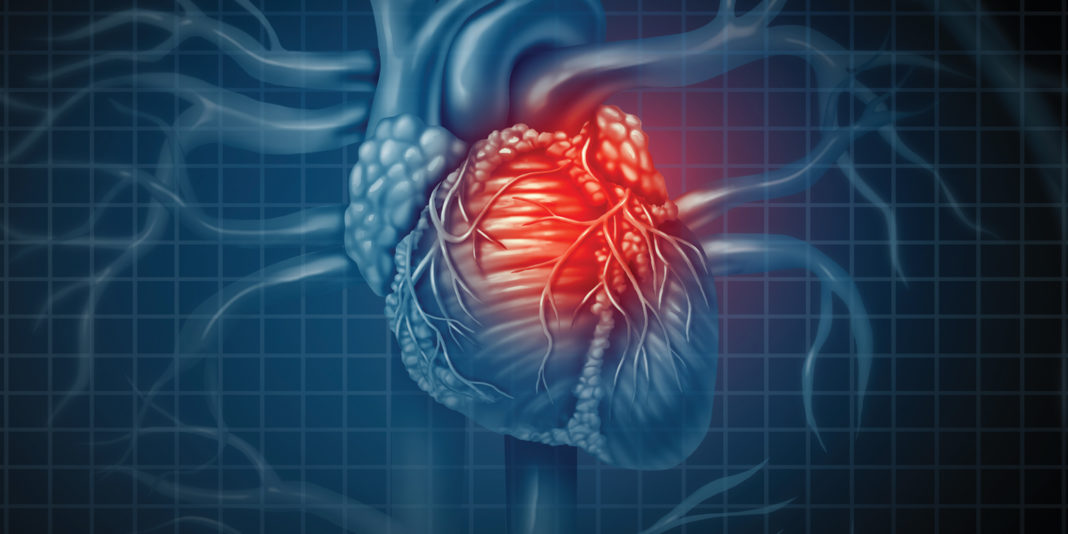Linda Worrall-Carter now looks back and wonders why she nursed so few women in coronary care.
The chilling conclusion the former Professor of Cardiac Nursing comes to is that probably most died before they ever got to a coronary care unit.
Think heart disease and you visualise a middle-aged man clutching his chest after exertion or a stressful board meeting. Heart disease, however, is far from being a ‘man’s disease’. It’s the biggest single killer of Kiwi women – and when combined with strokes is the cause of more women’s deaths than all the cancers combined.
And not just in old age – heart disease is the biggest cause of premature death too – pushing breast cancer into third after strokes. (For Māori women, heart disease is the second biggest cause of premature death; the first is lung cancer.)
Back in 2014 Worrall-Carter was a professor of cardiac nursing who had helped to establish the Cardiovascular Research Centre at Melbourne’s St Vincent Hospital, plus a nursing group that grew into the Australasian Cardiovascular Nursing College.
She could not be accused of not playing a role in heart health, but frightening US statistics at the World Congress of Cardiology that year – that heart disease and stroke was killing approximately one women every 80 seconds in the US, and that 80 per cent of heart disease and stroke events may be preventable – made her think she wasn’t doing enough.
“I thought, ‘I can’t sit back and do nothing’. When women don’t know…” recalled Worrall-Carter, a keynote speaker at the recent annual New Zealand conference of the Cardiac Society of Australia and New Zealand. “They think they are going to die of breast cancer.”
So the nurse, who on a personal level has a family history of heart disease (mother, father and aunts) resigned from her professorship to found women’s heart health charity Her Heart. She says people thought she was mad – she had just received a hard-won $7.9 million research grant – but she just didn’t think research alone was making the impact needed. “Women kept saying to me, ‘We have no idea that this is an issue’,” Worrall-Carter told the Christchurch conference.
One of the reasons she believes women think breast cancer kills more women than heart disease is that everywhere you turn you see pink – pink ribbons on products, pink logos on t-shirts and other pink links and endorsements to various breast cancer charities. “They do such a fabulous job”.
Other women’s cancers and health issues have their charities too, but the biggest premature killer of women – heart disease – is in a charity vacuum for women, which she filled with www.herheart.org, a place for women to access clinical information, education and advice on heart health that now has followers from 128 countries.
“I want every women to know that the biggest killer is heart disease,” said Worrall-Carter, who is also in high level advocacy with the Australian Federal Government to bring home the cost in dollars and lives of heart disease in women.
Why don’t more women know?
In the US a big ‘Go Red for Women’ campaign was launched in 2003 by the American Heart Association, a few years after a survey found that only 30 per cent of women identified heart disease as the leading killer of women.
By 2012 this awareness had increased to 56 per cent, but Go Red continues to advocate and push for greater health equity, arguing that women are still underrepresented in heart research and are still not receiving optimal treatment, with women more likely to die within five years of a heart attack than men.
One reason for heart disease being considered a man’s disease and men being more readily diagnosed and treated, is that historically that’s who heart research focused on – men – partly because it affected men years earlier than women and also the fear of involving child-bearing-age women in research.
In the US the average age for a first heart attack continues to be younger for men (65 years) than women (72 years), with oestrogen thought to provide some protection for women until menopause, when heart disease risks such as blood pressure and ‘bad’ cholesterol go up.
But Worrall-Carter told the Christchurch conference that one of the frightening statistics out of the US is that the biggest increase in heart disease is in women aged 25–40 years old, so it is no longer relevant to perpetuate the idea that heart disease is solely an older woman’s problem.
An international study in 2008 compared how primary care doctors in the US, UK and Germany’s behaviour and diagnosis differed when presented with the same heart disease symptoms by patients of different gender and the findings suggested that women may be less likely to receive an accurate diagnosis and appropriate treatment than men.
In the US women under 55 hospitalised by a heart attack are twice as likely to die than men of the same age. A 2015 US qualitative study indicated that women heart attack victims did not accurately assess their cardiovascular risk, reported poor preventative health behaviour and delayed seeking care for symptoms – suggesting that better heart knowledge and preventative care might help improve outcomes for women, along with better diagnosis and acute care.
A major review published late last year of 180,000-plus Swedish cardiac patients found that women were three times more likely to die following a serious heart attack than men. The women were older, more likely to have diabetes or high blood pressure, and more likely to ignore their symptoms, but that did not fully account for the difference in death rates.
The review found that women were less likely to receive the same diagnostic tests (making them 50 per cent more likely to be initially misdiagnosed), less likely to receive stents or bypasses, and less likely to be prescribed statins or aspirin. When women did receive all the recommended treatments, however, the gap in mortality rates reduced significantly.
Heart attacks: don’t want to make a fuss…
Women being more likely to dismiss or ignore their symptoms is an issue of concern.
Worrall-Carter says a focus of Her Heart is for women to put themselves first. Anecdotally, women urge their husbands to head to ED if chest pain strikes, but research indicates they are just not as good at following their own advice.
No two heart attacks are alike for either sex. The difficulty for women is that heart attack symptoms can be more subtle, less likely to involve chest pain (see symptoms box) and not always easy to diagnose without a blood test and full assessment.
The Heart Foundation says two-thirds of deaths from heart attacks in women occur among those who have no history of chest pain, and unfortunately women tend to wait longer than men to call for an ambulance.
Her Heart emphasises the importance of women putting themselves first as it fears that feelings of embarrassment and not wanting to be a burden on others are major reasons why women tend to delay seeking treatment.
Her Heart also wants to ensure that women’s heart health is on the radar for all women and the health professionals who care for them. The aim is that more women are diagnosed, treated and make the lifestyle changes that help prevent them from adding to the already frightening statistics of women who die too early because of heart disease.
Kiwi women’s heart statistics
- Heart disease is the single biggest killer of women of all ages in New Zealand
- Heart disease is the leading cause of premature death for women in New Zealand
- Nearly 60 women die from heart disease in New Zealand every week, more than 3,000 women a year
- At least two women die from a heart attack every day.
Source: Heart Foundation and Ministry of Health
When should women get a heart check?
- Women without known risk factors: from 55 years of age
- Women with significant known heart disease risk factors: from 45 years of age
- Māori, Pacific or South Asian women: from 40 years of age
- Women with type 2 diabetes: as part of the annual diabetic review
- Women with severe mental illness: from 25 years of age.
Source: Heart Foundation of New Zealand
Heart risk factors in women
- Smoking (higher risk for women than men as nicotine metabolises faster)
- Being overweight or obese
- High blood pressure
- Diabetes (linked to greater risk of heart disease for women than men)
- Family history of heart problems (stronger predictor in women than men)
- Kidney disease
- Physical inactivity (being inactive could double your risk of heart disease)
- Excessive alcohol intake (can lead to weight gain, weakened heart muscle and irregular heartbeat)
- Depression/anxiety/stress (evidence now indicating that depression can be as big a risk factor as smoking. Stressed people can be at risk of unhealthy lifestyle behaviours)
- Slight increased risk if on contraceptive pill, increased if woman smokes or is older
- Metabolic changes in post-menopausal women can lead to increased blood pressure, ‘bad’ cholesterol, and greater body fat around the abdomen
- Having gestational diabetes or pre-eclampisa during pregnancy
- Some studies indicate suffering hormonal dysfunctions, such as polycystic ovary syndrome, increases heart disease risk in later life.
How to improve heart health in women (and men)
- Quit smoking
- Manage blood pressure
- Eat a heart-healthy diet
- Be physically active
- Control blood sugar
- Reduce stress
- Prioritise wellbeing and ‘recharging’ your body and mind
- Get regular heart check-ups
- Undergo a rehabilitation programme after a heart attack, heart surgery or procedure.
Source: Heart Foundation of New Zealand and www.herheart.org
Symptoms of heart attacks in women
- Unusual pain in your neck, chest, shoulder, jaw, abdomen and/or through to your back
- Feeling short of breath, sweaty
- Racing of your heart or feeling of ‘fluttering’
- Light-headedness, nausea and vomiting
- Women are more likely to experience non-chest pain symptoms (only 40% have crushing chest pain)
- In women the pain is more likely than in men to spread as far as the shoulders, neck, abdomen and even the back
- In women the pain may feel more like indigestion and not be consistent
- In women the symptoms may not be pain but unexplained anxiety, nausea, dizziness, palpitations and cold sweat
- Overwhelming weakness or fatigue is sometimes a symptom
- Women tend to wait longer to call an ambulance for their symptoms
- Women more likely to have heart attack mis-diagnosed than men.
Source: Heart Foundation of New Zealand and www.herheart.org





















